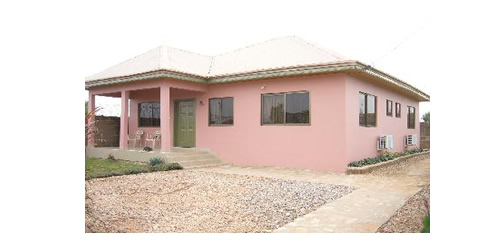Guinea fowl chicks imported from Belgium – ex-SADA board Chair

Commercial production of guinea fowls in Ghana requires the importation of the day-old birds from Europe, former board chair of the Savannah Accelerated Development Authority (SADA), Alhassan Andani has revealed.
“…I don’t think Ghanaians know that we import guinea fowl chicks – even though we think guinea fowl is native to us – we import guinea fowls from Belgium.
“If you need to grow 5,000, or 10,000 guinea fowls, we’ve got to get those day-old chicks from outside of the country,” the Managing Director of Stanbic Bank said in an interview on Tuesday as he spoke, for the first time, about a past conflict of interest allegation leveled against him, as far as SADA’s account with Stanbic was concerned, while he served as chairman of the Authority’s board, simultaneously.
SADA – an independent state agency responsible for coordinating a comprehensive development agenda for the northern savannah ecological zone in Ghana – undertook a series of development projects, including tree-planting and guinea fowl rearing – aimed at reducing poverty in the northern and savannah zones of Ghana, and in the long run, bridging the gap between the impoverished north and the rich south,
Its poverty alleviation programmes got fraught with allegations of corruption and financial malfeasance.
For example, critics, including civil society groups and the Minority in Parliament, have always said virtually nothing was achieved by the programme’s Ghc32.4 million afforestation project undertaken by ACI Construction Limited, a subsidiary of the AGAMS group of companies, owned by Roland Agambire of Rlg fame.
The trees planted in the Northern Savannah Zone perished because they were nursed in the dry season.
The afforestation plantations started in June 2012 after SADA entered into a contract with ACI Construction Limited.
Following the criticisms, a report was released almost two years ago, by the University of Development Studies (UDS), which said: “The average percentage survival of all the planted species in the SADA plantations were very high (85%) with the highest (88%) recorded in the Eastern Zone and the least (76%) in the Southern Zone.”
The UDS report titled: “Evaluation of SADA-ACILCL Afforestation Project” said: “A total of 145 plantations were surveyed in all the four afforestation zones encompassing 45 political districts in 5 regions. Eight tree species were planted in the various operational zones namely; Tectona grandis, Senna Siamea, Albizia lebbeck, Khaya senegalensis, Mangifera indica, Anacardium occidentale, Eucalyptus spp. and Moringa oleifera.”
A team of experts led by Prof. S.K.Oppong inspected the plantations. His team included W.J. Asante, Mr. D.Tom-Dery, and Mr. B.N. Baatuuwie.
Apart from the alleged tree-planting fiasco, SADA was also accused of wasting Ghc15 million on the Guinea fowl project, since independent inspections revealed there were just a handful of birds.
In their defence, SADA officials said a large flock of the birds took flight to neighbouring Burkina Faso.
However, presenting SADA’s development plan at the National Development Planning Commission public consultative forum in Tamale recently, current CEO, Mr Charles Abugri, disclosed that the guinea fowls have started returning home.
“I can announce that those guinea fowls are on their way back from Burkina because I ate a few in Bolgatanga a few days ago,” he was quoted by the Daily Guide newspaper to have said.
During his chairmanship, Mr Andani, who was recently named 2015 CIMG Marketing Man of the Year, said SADA had plans to make the poultry project commercially viable.
“…So we had great schemes to see how we could actually commercialise it; make sure you brought in the right hatcheries, brought in the right technical skills to actually commmercialise this very strong bird,” he told Kojo Yankson, host of the Super Morning Show on Joy 99.7fm.
Source: Class FM





